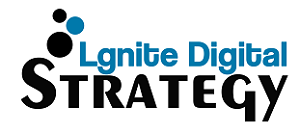Automated Provisioning streamlines employee onboarding and offboarding, removing manual labor from IT and HR teams. This eliminates inefficiencies and ensures that all users have access to systems and data required for their role. Identity and Access Management (IAM) platforms provide automated Provisioning as a critical feature. This process automatically assigns access to tools, applications, and data based on predefined rules.
Automate the Onboarding Process
Automated Provisioning makes onboarding employees, contractors, and consultants easy by allowing organizations to add new hires, switch roles, or leave the company directly into their identity management system. This helps new employees get access to the applications and resources they need on day one, freeing up Human Resources and IT teams to focus on more strategic tasks. The benefit of automated provisioning is many, from reducing employee turnover and increasing productivity to improving security. By ensuring that all user accounts and data are automatically removed when an employee leaves, businesses can avoid risking damage to their systems or data. In addition, automated onboarding processes allow companies to streamline the paperwork and admin processes that take up a lot of time. They also help HR and hiring teams deliver a more standardized onboarding process that improves retention and productivity. Another significant benefit of automated onboarding is that it allows companies to stagger their steps, providing essential information when the employee needs it most. This will enable people to understand their new role and learn about the company’s culture without feeling overwhelmed.
Automate the Deprovision Process
Manual onboarding practices can take days, weeks, or even months to create accounts and approve and move access requests. This massively increases the burden on IT and HR resources, especially as your company scales. Automated Provisioning eliminates manual processes and dramatically reduces the margin of error. This saves companies time, money, and resources by ensuring users only receive the permissions they need. It also helps businesses keep their networks, data, and applications secure by removing unused accounts from the web and deleting them when an employee leaves. This can reduce the risk of hackers gaining access to sensitive company information or stealing usernames and passwords. Lastly, automation enables IT Pros to synchronize changes between databases and directories, saving them time. By focusing on user provisioning, you can reduce costs by reducing the number of hours employees spend per year accessing your systems. In addition, reducing the number of manual provisioning steps will free up resources and allow you to focus on other things.
Automate the Maintenance Process
Maintenance automation software can streamline your existing maintenance processes, enabling you to handle more requests in less time and increase efficiency. It can also help you manage maintenance challenges for your property and common areas and communicate progress with residents on a single digital platform. Schedule maintenance tasks automatically based on predefined events, asset types, and technician skill sets. Automated work orders can also be created based on data from condition monitoring sensors installed on critical assets. This will allow maintenance managers to avoid over-maintaining investments and reduce their operational costs.
Additionally, it will give them a better understanding of their equipment’s performance and inventory stock levels. Manual processes often result in inefficiencies and errors, wasting valuable time and resources. In addition, manual processes could be more scalable as the number of users and their needs grow. Moreover, implementing an automated system can help you keep your data and designs secure by granting users access to only those tools and applications they need. This will ensure that only the right people can access your most sensitive information. The cost savings associated with automated Provisioning are significant, as it eliminates the need for manual processes. It frees up time for your essential team members to focus on higher-priority tasks. Automated Provisioning also helps reduce user downtime by avoiding the need to manually change permissions and access levels as employees are added or removed. This saves organizations time and money, as well as improves productivity.
Automate the Reporting Process
In addition to enhancing operational efficiency, automated resource provisioning offers several cost-saving benefits. For example, reducing manual processes saves employees’ time and resources, enabling them to focus on value-add activities that improve their business’s insights. Furthermore, the removal of manual data wrangling reduces the risk of errors and human-related mistakes. This saves valuable resources, as it frees team members to focus on more value-adding activities that improve the quality of their work and boost their productivity. Automation tools are available in many forms, and each has a unique set of features. Identifying your reporting needs, goals, and critical KPIs is essential to determine which solution is most suitable for your business. Most automated solutions feature intuitive technologies that streamline the curation, collection, visualization, and analytical processes, delivering accurate, dynamic, and highly visual insights. This enables organizations to harness their data more efficiently and ensures they always catch vital trends, patterns, or information. Additionally, most of these solutions offer a high degree of accessibility, which democratizes data analytics and makes it easier for everyone in the organization to access the critical information they need to perform their duties.








